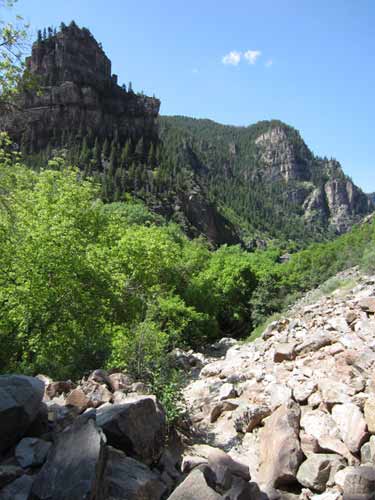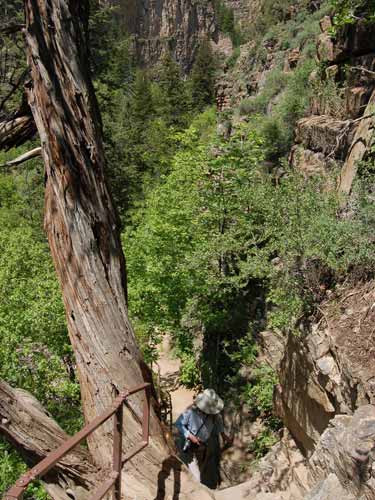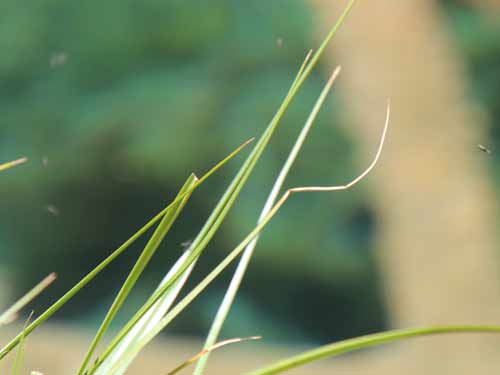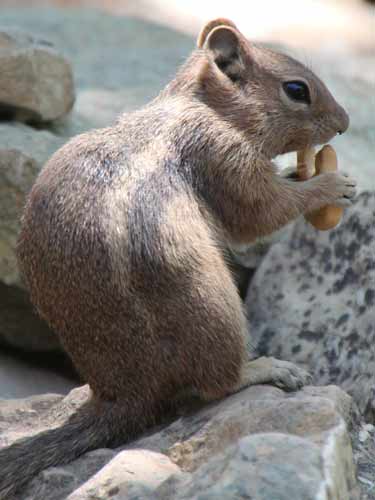
The Log Cabin Cafe

Woah... this is HUGE!
We continued on and about 85 miles later, we entered Glenwood Canyon. This is an incredibly impressive 12.5 mile-long gorge cut by the Colorado River and with steep canyon walls. Because of the way the highways exits work (due to limitations from the canyon), we had to double back in order to get off for a hike to Hanging Lake. Even though it was early, the parking lot was filling up quickly.

In spite of this, there were still plenty of cigarette stubs around.
We walked along the paved Glenwood Canyon Recreation Path, a 16-mile bike path through White River National Forest (which also encompasses Hanging Lake), to get to the trailhead.

The path runs down Glenwood Canyon, along the Colorado River.

Steep canyon walls

Regan shows he's prepared with his footwear and his water.
The trail isn't very long, only just over a mile one-way, but the elevation change is quite drastic... 1,020 feet. Basically, it's a STEEP hike. And so, we walked uphill, with the bouncing cascades of Dead Horse Creek to keep us company almost the entire way.

Heading up the "path"

A quick look behind

Lots of green...

... due to lots of water.



And lots of water-loving plants such as Chiming Bells...

... and some Blue or Common Violets.


In spite of its protective eye-like markings, this butterfly has seen better days.

A pollen-covered bee

Interesting rock shapes...

... and colors...

... and textures.

Higher up the canyon

The path gets steeper...

... and steeper...

... and steeper! My view of a single step up...

... and Regan's view.
Hanging Lake is a very delicate ecosystem (built on layers of travertine which line the lake, formed over thousands of years from deposits of dissolved limestone). I'm not sure how it has survived this long with the huge number of tourists.

Hanging Lake


Tiny flies constantly made their presence known.

Getting closer to the falls




Numerous tourists were feeding the loitering ground squirrels and chipmunks. Is it doubly wrong to feed an animal an animal cracker?

The Antelope Ground Squirrel is adapted to the desert and can survive body temperature over 104 degrees F (or 40 C).

A juvenile

Chipmunks look a lot like ground squirrels but generally are much smaller and have a stripe across their eyes.

